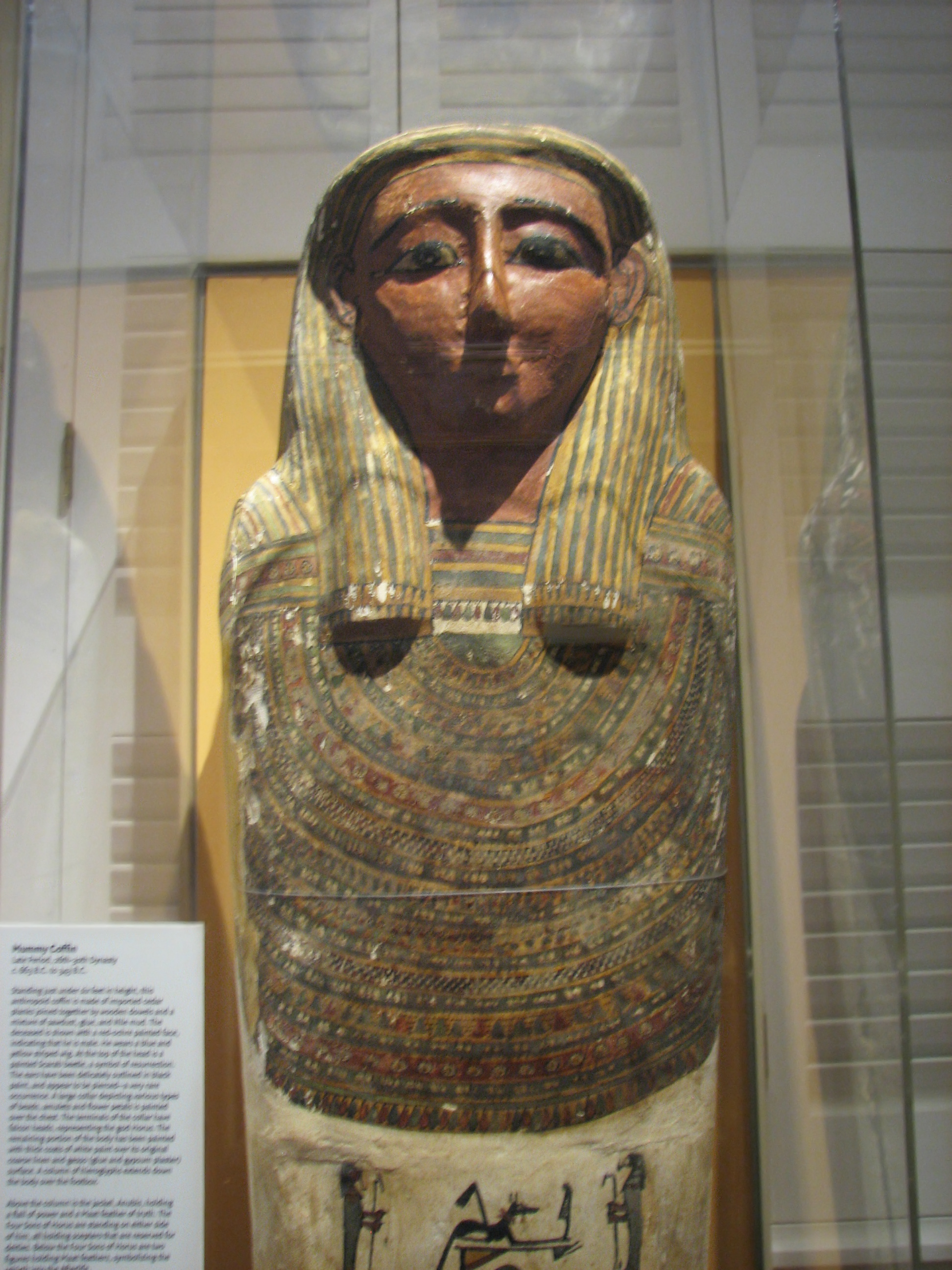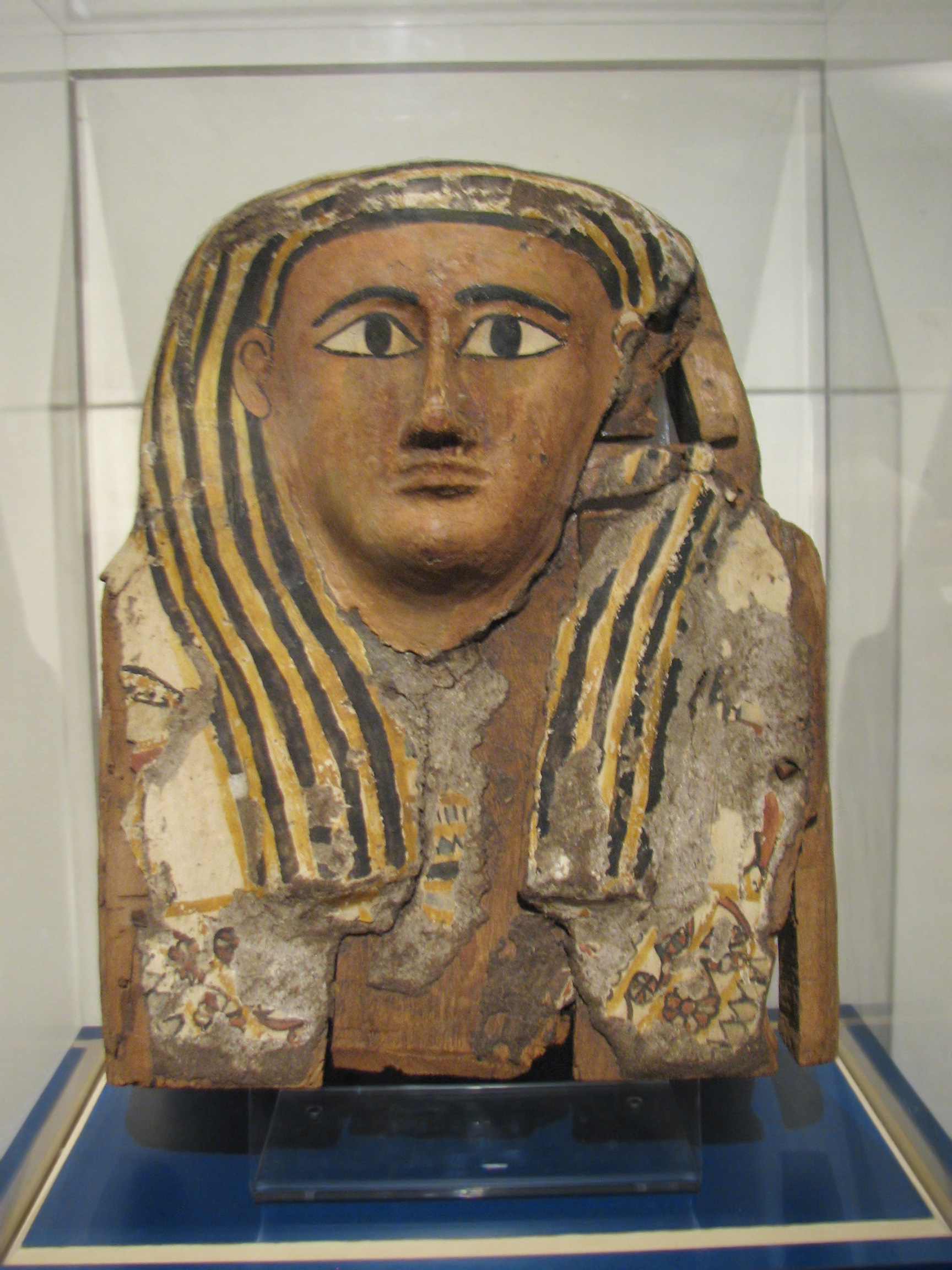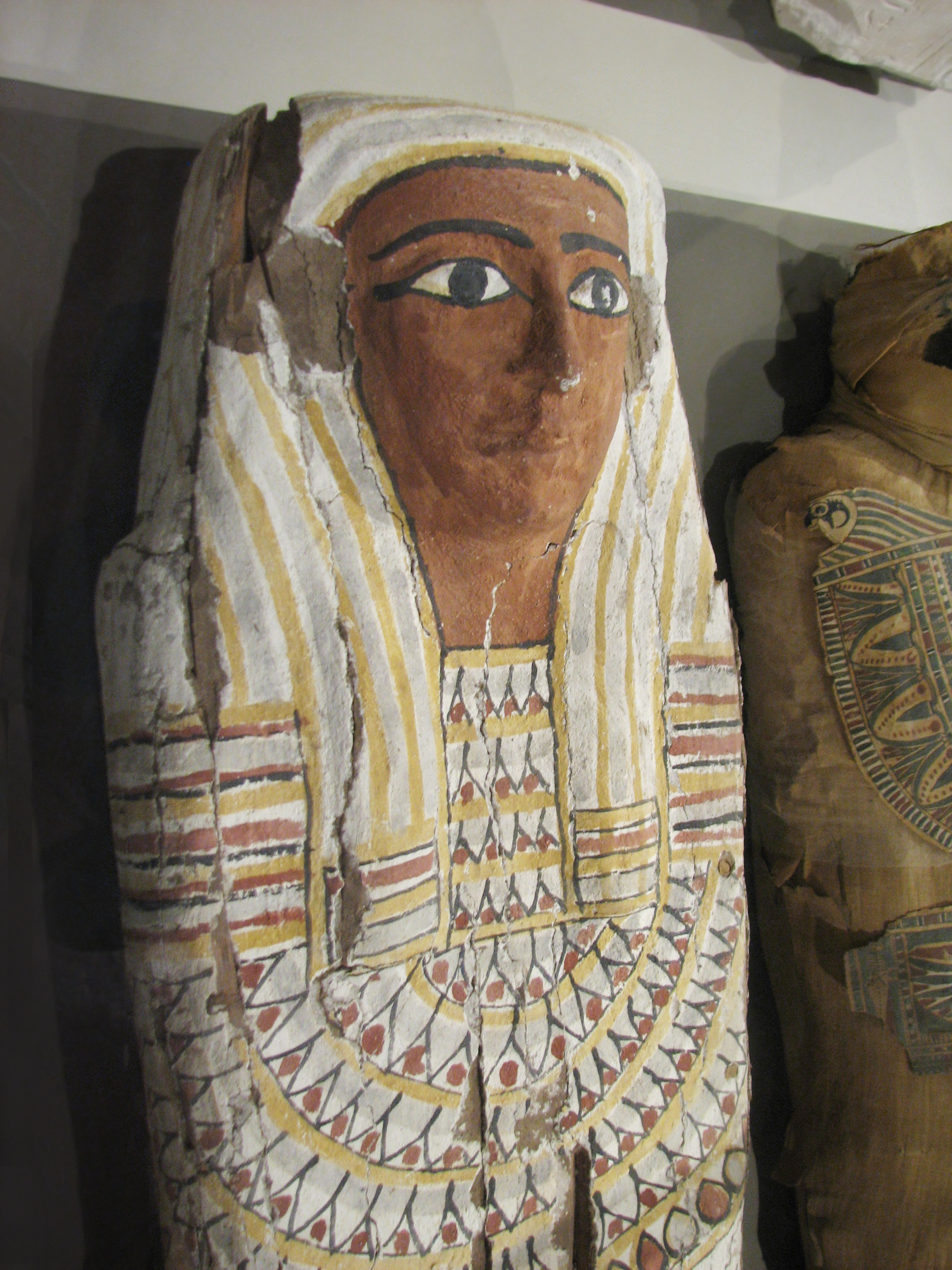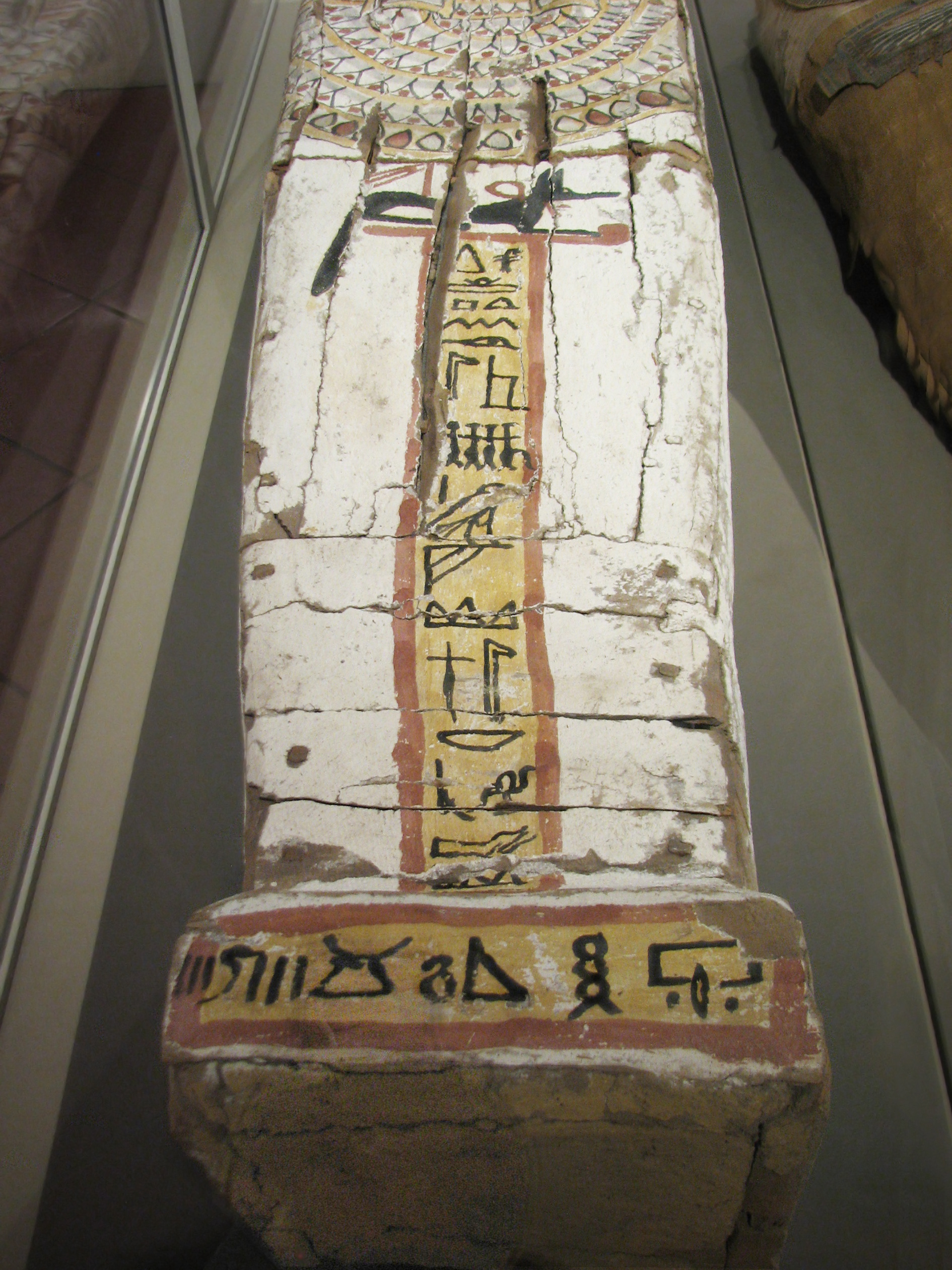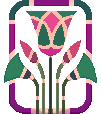
Saturday, August 6, 2016
Mummy Things at Museum of Man
8:11pm
Late Period, 26th-30th Dynasty, ca 663 BCE to 343 BCE
Martin and Maria Paul Collection, Museum of Man
"Standing just under six feet in height, this anthropoid coffin is made of imported cedar planks joined together by wooden dowels and a mixture of sawdust, glue, and Nile mud. The deceased is shown with a red-ochre painted face, indicating that he is male. He wears a blue and yellow striped wig. At the top of the head is a painted Scarab beetle, a symbol of resurrection. The ears have been delicately outlined in black paint, and appear to be pierced--a very rare occurrence. A large collar depicting various types of beads, amulets and flower petals is painted over the chest. The terminals of the collar have falcon heads, representing the god Horus. The remaining portion of the body has been painted with thick coats of white paint over its original coarse linen and gesso (glue and gypsum plaster) surface. A column of hieroglyphs extends down the body over the footbox.
"Above the column is the jackal, Anubis, holding a flail of power and a Maat feather of truth. The Four Sons of Horus are standing on either side of him, all holding scepters that are reserved for deities. [Was scepters, meaning Power] Below the Four Sons of Horus are two figures holding Maat feathers, symbolizing the rebirth into the Afterlife.
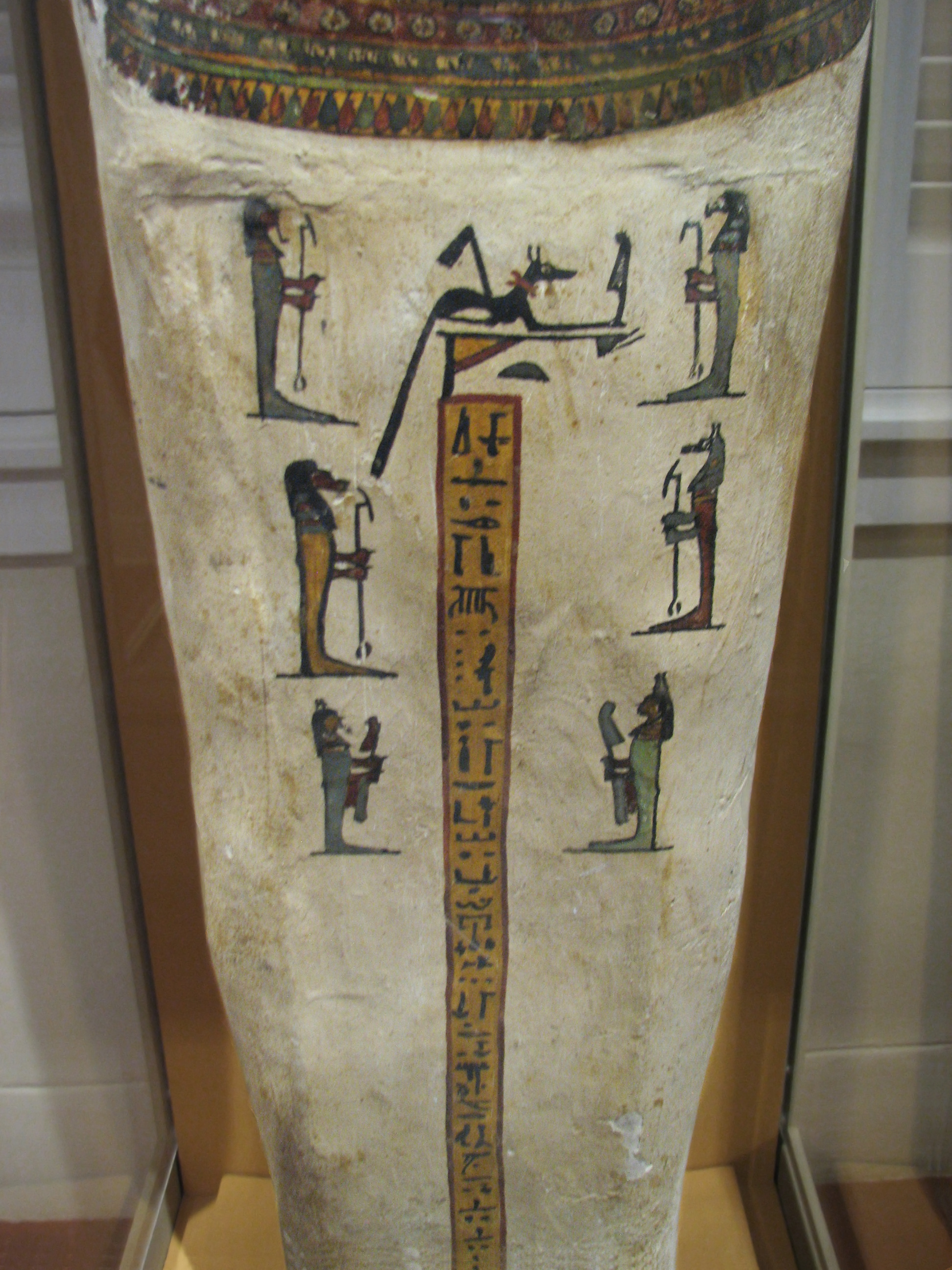
A sketchy version of the standard "An offering which the king gives..."
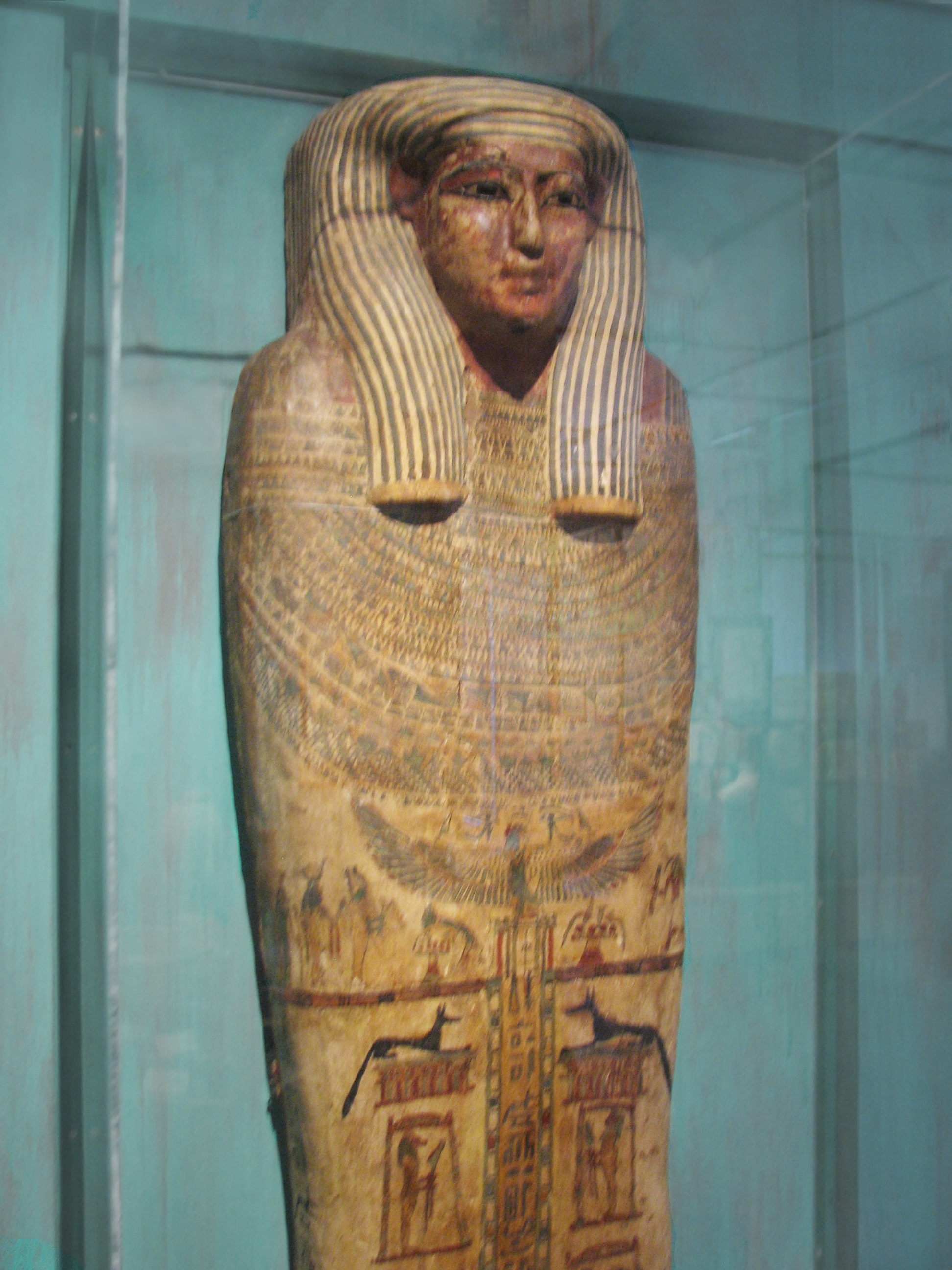
If there was an info card, I did not photograph it...
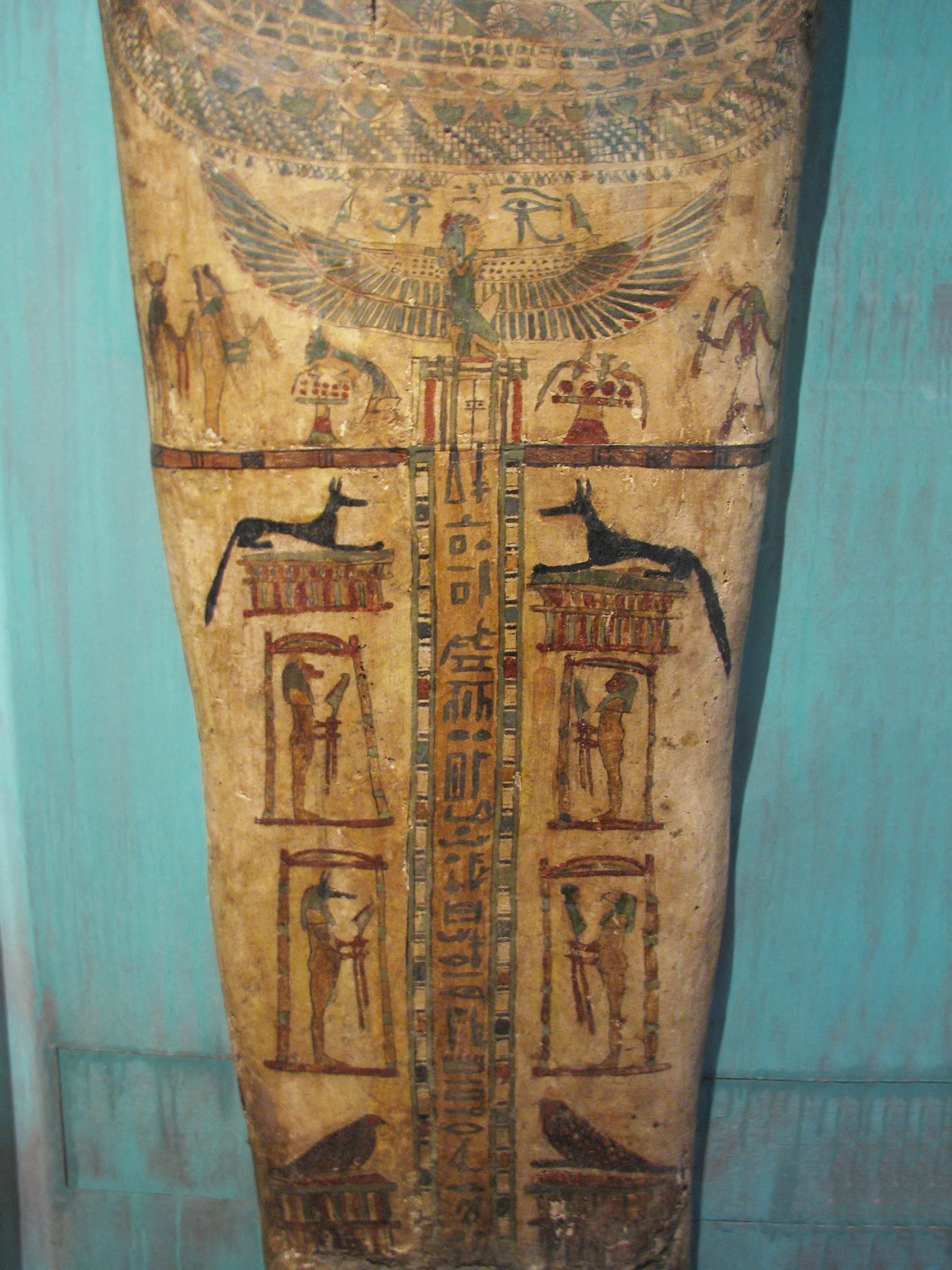
Two jackals (Anubis and Wepwawet?), then the Four Sons of Horus, then Sokar(?) ...
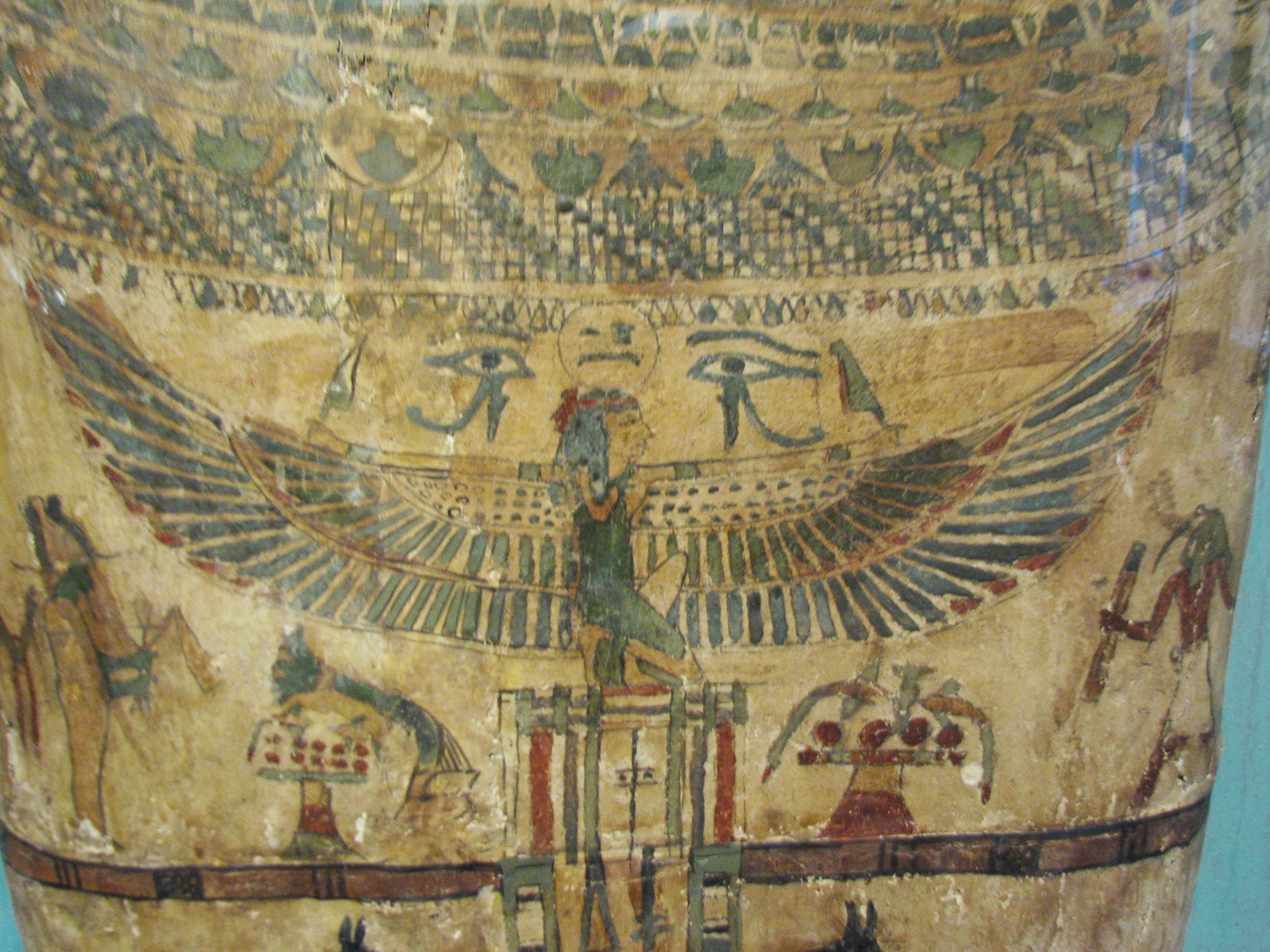
The goddess Nut, with wings and outstretched arms to embrace the soul of the deseased...
Osiris is to the left below her and Thoth is to her right...

If there was an info card, I did not photograph it...
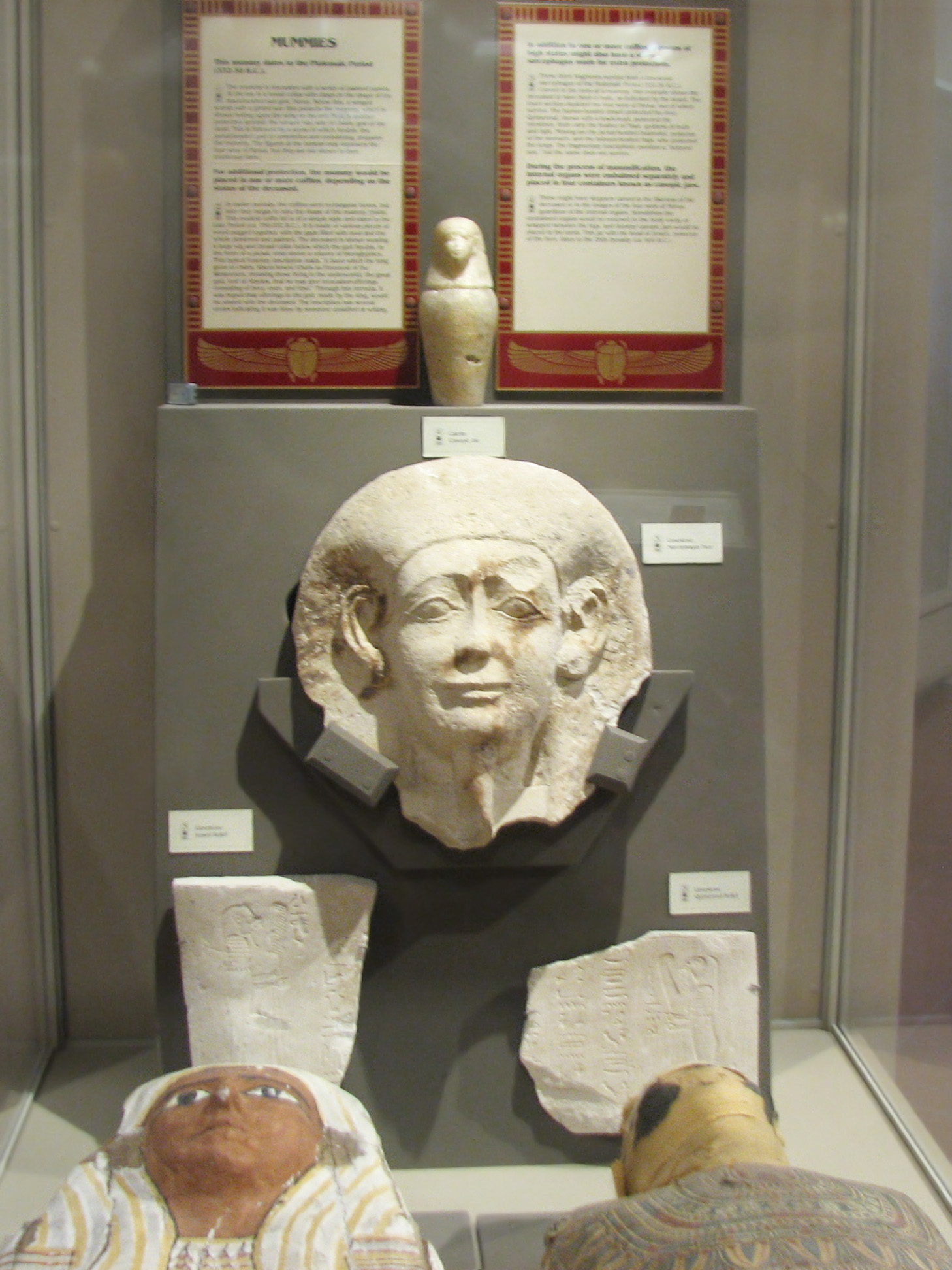
Overview of one exhibit area...
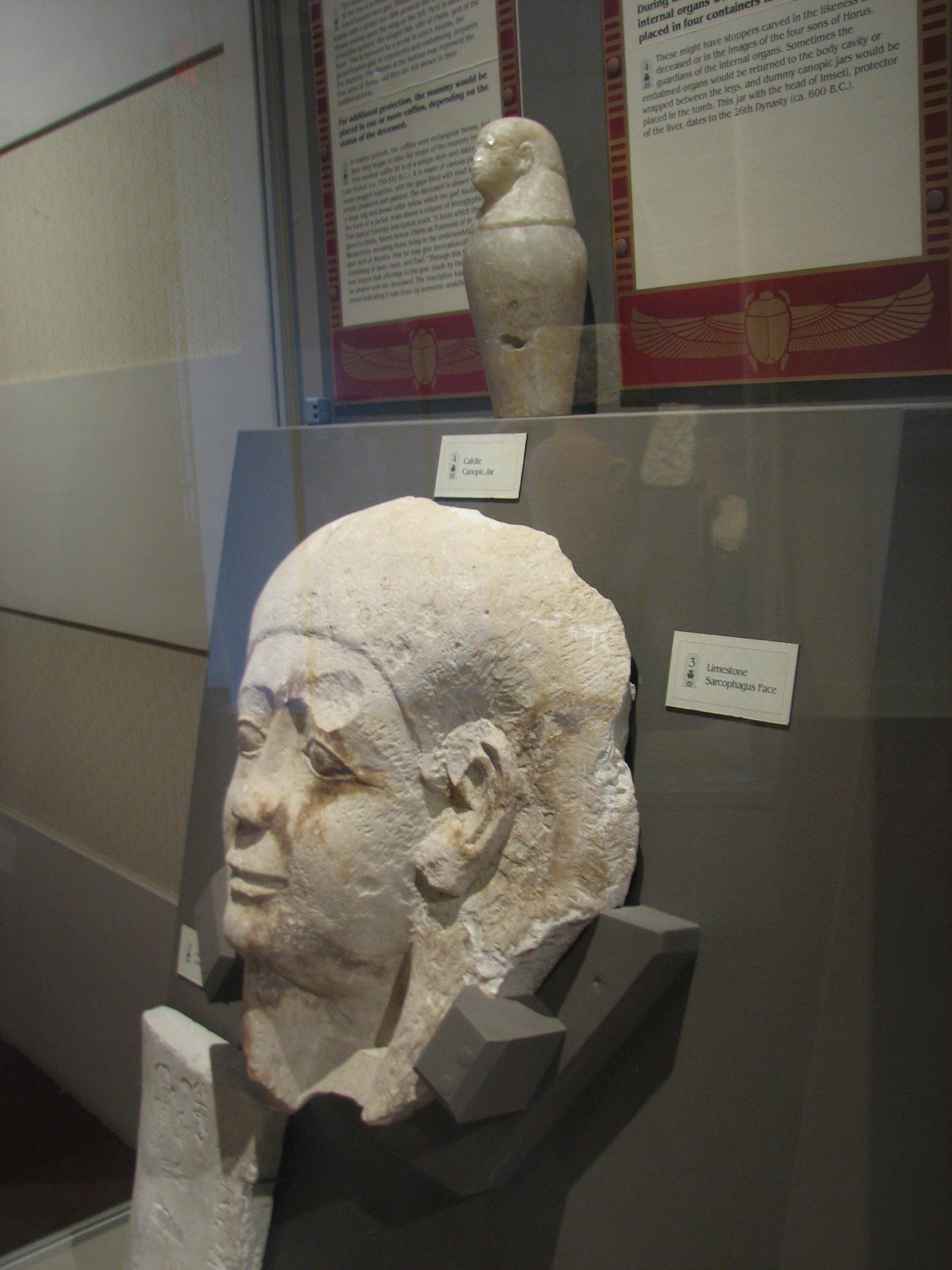
Limestone sarcophagus face, Ptolemaic era...
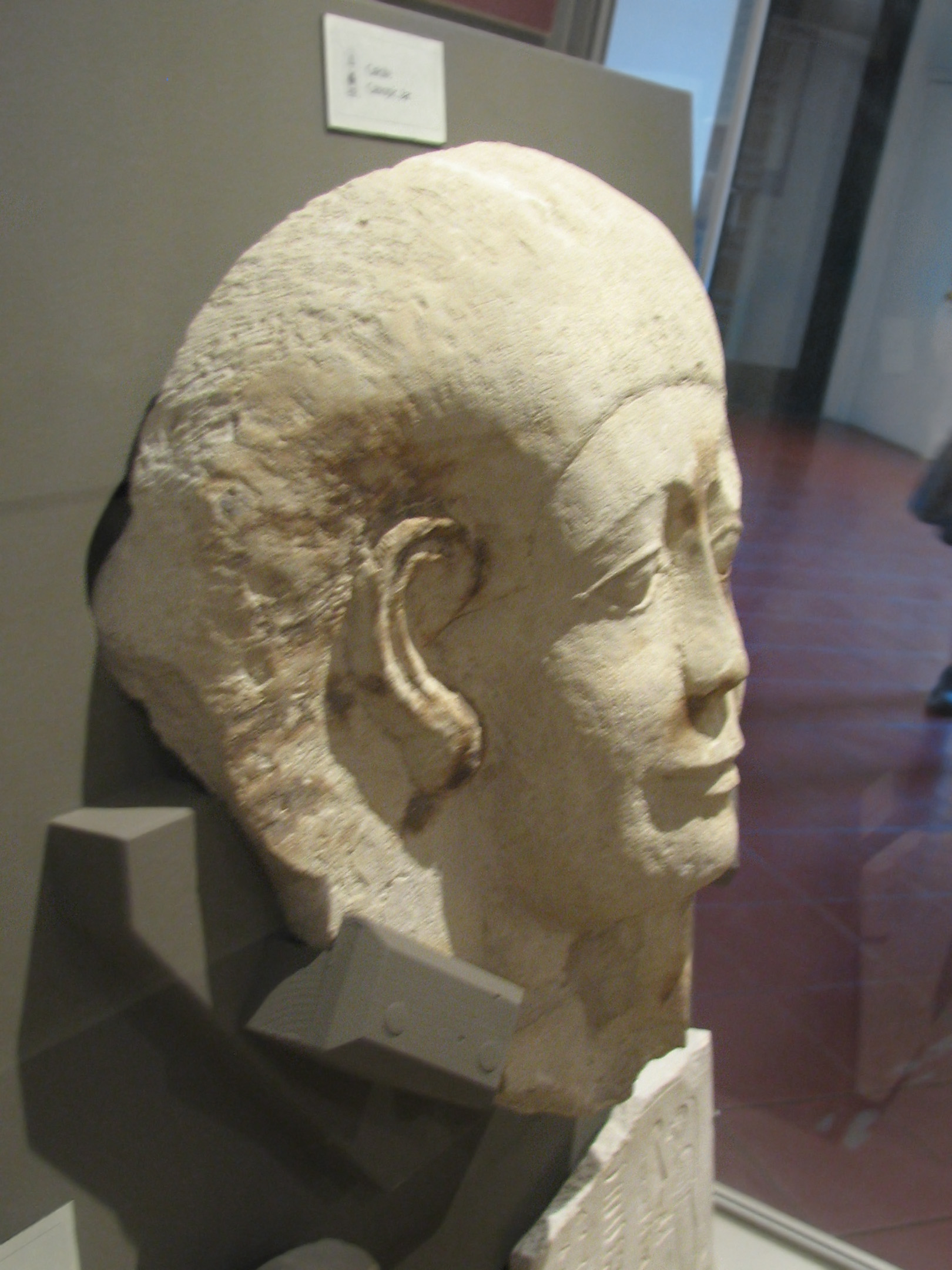
The two fragments below the face are also from the same sarcophagus, Qebehsenuef under this link...
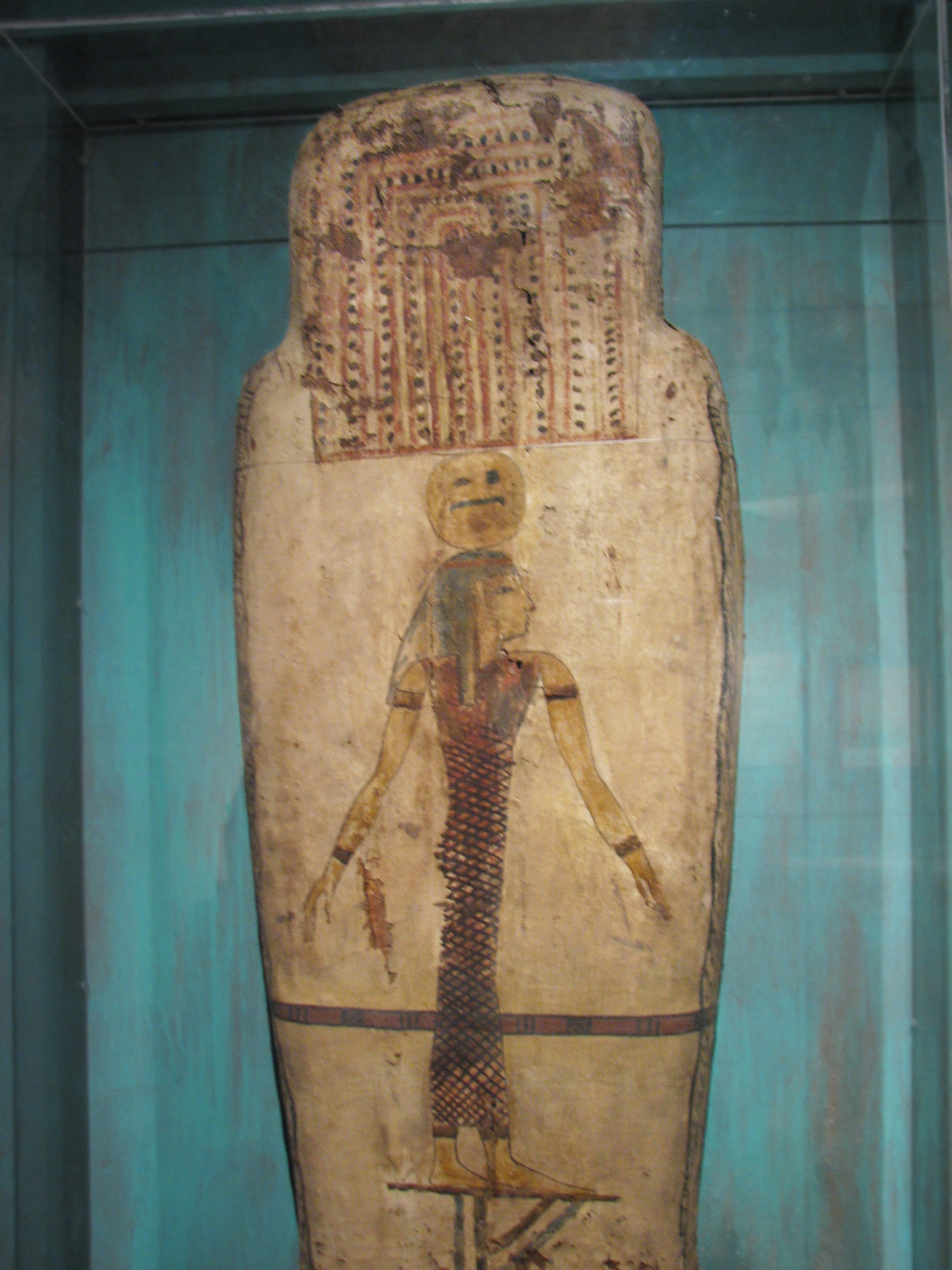
The goddess Nut on a mummy board
